Low back pain is a common phenomenon that occurs regardless of age, but is more common in adults. There can be many causes - from physiological factors to diseases. Sometimes back pain occurs briefly and passes quickly. However, low back pain can be a sign of a serious illness and in these cases it is necessary to see a doctor.
Reasons
There are many causes of acute low back pain, they are strictly individual to each sufferer. The most important of these are diseases and spinal changes that can respond with irreversible consequences.
Basic (most common)
The most common reasons are:
- OsteochondrosisAwkward movement causes pressure on the roots of the spinal cord nerve trunk. Burning and heartburn do not go away during the day, if you lift something heavy, there is just a hellish pain in the lumbar region.
- herniated disc. Typically, the hernia is localized in the lower part of the spinal cord and sudden movement of the trunk causes compression of the nerve roots.
- sciatica. With lumbosacral sciatica, shooting pain syndrome occurs. This causes heavy lifting or unsuccessful movements. The sharp pain restricts the patient’s movement so much that he is unable to straighten and remains in the same position he was in at the time of the attack.
- Spine movement. This problem is characterized by shooting pain in the lumbar region and, slightly lower, stiffness of movement. This pathology is accompanied by urinary incontinence and intestinal dysfunction.
- Facet Syndrome. As the sides of the intervertebral discs widen, both up and down, the intervertebral discs shrink. In this case, unpleasant sensations arise that come suddenly and occur more than once a month. When leaning back, the patient experiences discomfort in the back.
- epidural abscess. Pus accumulates in the spinal cord due to infectious diseases of the urinary tract. In addition to pain, fever, weakness, and an increase in body temperature occur.
These are the causes - the consequences of diseases of the spinal cord.
The lower back can become sore due to a difference of 2-3 cm in leg length. It is difficult for a person to move, back pain is felt due to the constant curvature of the spine.
Overload and physical fatigue
In addition to serious diseases, severe lumbar spine pain is also caused by a large overload and a sharp forward deflection of the trunk. Also, this problem arises when the temperature effect on the body is violated. The source of this pain is:
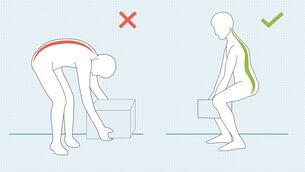
- Muscle stretching. Exacerbation of lower back muscle tension occurs due to physical exertion. Muscle contraction causes pain and reduces mobility. This problem is found in athletes and people who work hard.
- neuralgia. Spinal hypothermia causes neuralgia - irritation or contraction of nerves. The pathology manifests itself in different ways: sometimes in the form of convulsions, accompanied by redness of the affected area, shivering, swelling of the tissue and heavy sweating.
- myositis. Lumbar pain and discomfort begin at night, as well as a sudden increase in weather conditions, followed by hypothermia and overwork.
Frequent colds, impaired immunity, spinal cord injury after a blow or fall, both new and old, can trigger an attack.
Disorders of internal organs
Sometimes it hurts in the lumbar region due to damage to other organs: heart, liver, kidneys, lungs, gallbladder. During inhalation, pain syndrome spreads from the lumbar region along the nerve canals. Often the causes of this pathology are:
- pyelonephritis. It is an infectious inflammation of the kidneys and urinary tract. Usually the pain is dull, but the attacks are accompanied by chills, weakness, nausea and vomiting, fever.
- urolithiasis. The problem manifests itself as a sudden sharp pain that becomes unbearable with prolonged walking and hard work. The attack is accompanied by nausea, vomiting and bleeding in the urine.
- Ectopic pregnancy. If there is a rupture of the fallopian tube with rupture of the abdomen, there is a shooting pain that radiates to the uterus and rectum. Rupture is accompanied by loss of consciousness, and with tubal abortion, a hematoma develops in the peritoneal cavity.
- Pelvioperitonitis. It is a transient inflammatory process of the uterine appendages. The woman has severe pains in her abdomen and back. In addition to the existing unpleasant sensations are added chills, fever and palpitations.
- Tumors of various origins. Cancer with metastases causes painful attacks when pressed on nerve endings. Often there are no initial signs of the disease.
It is difficult to diagnose lesions of internal organs with severe pain in the lumbar region. Therefore, you should contact a specialist immediately or call an ambulance. In some cases, delays can lead to serious health problems and even death.
Lumbar pain is felt in almost all pregnant women. This is due to the restructuring of the body and the increase of the burden on it. Also, hard or difficult labor can become the cause.
Symptoms of possible diseases
Pain syndrome most often occurs against the background of stretched nerve, osteochondrosis, deformity and degenerative changes of the intervertebral discs, irritation of the nerve roots. Muscle spasms can also cause discomfort in the lumbar region. Peculiarities of symptomatology for various diseases:
With- with lumbago, changes begin in the lumbar spine. Initially, acute pain can be controlled with medication. However, mobility remains limited.
- With sciatica, the symptoms move lower - to the upper surface of the legs and buttocks. If there is no timely treatment, then the disease becomes a constant companion and can lead to other diseases.
- Osteochondrosis leads to the development of other diseases of the spine. Therefore, the pain can occur not only in the lumbar region, but also throughout the post.
- Scoliosis is characterized by skeletal curvature, degenerative changes. The chronic form may be asymptomatic, otherwise pain in the bones is felt.
- Dry and smoky pains are characteristic of diseases of the internal organs (mainly the urinary system and kidneys), benign and malignant tumors. With spondylitis, the pain is dull, painful, very weak at first. As soon as the disease begins he begins to have pain in the lower back, movements are restricted. Gradually, the state of health deteriorates, the inflammation becomes more pronounced, it is difficult to move, it is difficult to give even minimal loads.
- In spinal tuberculosis, in addition to pain, body temperature rises. The person feels tired, weak, weak, appetite worsens. At night, there is heavy sweating, frequent urge to urinate.
Views
Pain may be localized to only one area or "spread" to the abdomen, spine, and lumbar region. The symptoms are severe, in the form of lumbago, dull and painful, surrounded. It depends on the disease or pathological process.
Pain can be periodic. Typically, this is caused by physical exertion, physiological characteristics, exacerbation of chronic pathologies. Constant, chronic pain occurs against the background of various diseases of internal organs, vascular lesions, deformities of the musculoskeletal system.
sharp
Sharp, strong, shooting pain causes limited mobility. During such attacks, a person freezes in one position and can not move. Slight stirring even unbearable pain. This syndrome is called lumbago. Such symptoms may occur after intense massage or hypothermia.
ღრიალი
Pain pain is associated with chronic diseases, often occurring with spondyloarthritis. Symptoms usually occur at night, after waking up or after sitting in one position for a long time.
pushes and is silent
These painful sensations can last a long time, they exhaust the person. Most often they can be worn. Dull and smoky pains are rare in osteochondrosis, more so in spinal pathologies or damage to internal organs.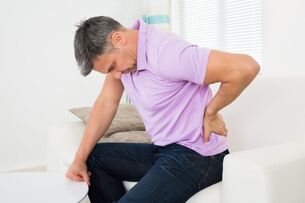 For example, in pyelonephritis, the kidney tissue collapses too much, causing the capsule to stretch, causing back pain.
For example, in pyelonephritis, the kidney tissue collapses too much, causing the capsule to stretch, causing back pain.
strips
Symptoms may appear in one place and radiate to the entire peritoneal area and "spread" to the back. The pain of the vest damages the entire lower part of the spine. Without additional diagnosis, symptoms can be confused with diseases of the spine and joints. However, girdle pain usually causes pathologies of internal organs.
Localization of pain
With ankylosing spondylitis, the symptoms are mainly in the lower back. Basically, the pain occurs in the morning, it can start late at night and gradually intensify, in the lumbar region. Also, discomfort in the lumbar region is accompanied by diseases of the pelvic organs, tail trauma, urological and gynecological pathologies, with the risk of miscarriage after childbirth. Symptoms in the upperoccur during kyphosis, trauma, muscle myositis, osteochondrosis, infectious processes, or tumors. Also, the cause may be pathologies of the gastrointestinal tract, gynecological, kidney and heart diseases, pneumonia, pleurisy, influenza, ARVI.
Pain in the lower back on the left or right side occurs due to disorders of the central nervous system, diseases of the spine and internal organs. Symptoms appear from the affected area. The appearance of negative sensations immediately on the left and right side is accompanied by pleurisy, hepatitis, pneumonia, cholecystitis, inflammation of the prostate, and in women - appendages.
traits in women and men
Some types of pain may only appear in women. For example, with gynecological diseases. Adnexitis is characterized by discomfort in the lower abdomen. In this case, the pain sometimes radiates to the lower back. Primary symptomatology during pregnancy occurs in the area of the uterus and radiates to the lower part of the spine due to the increased load on the spinal column. 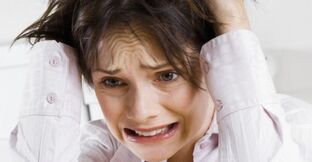 Low back pain occurs during childbirth, with the risk of miscarriage, in the last period of gestation.
Low back pain occurs during childbirth, with the risk of miscarriage, in the last period of gestation.
Menopause can be a cause of low back pain when menstruation stops. Symptoms in the lumbar region are influenced by a jump in estrogen levels, circulatory disorders, the initial stage of osteochondrosis, hernia and other diseases of the spine. Pain also arises as a result of stress, which women experience more than men. In this case the symptoms are periodic.
Back pain in men is more often associated with professional activities, risks - high physical activity, hypothermia, working on a project. There are a number of diseases that cause negative symptoms to appear on the back of the spine. With prostatitis, the pain first appears in the anal area, but may radiate to the back. Epididymitis is characterized by an inflammatory process. Initially, pain appears in the groin area, then it radiates to the lower back. At the same time, it is accompanied by a rise in temperature and swelling of the scrotum.
First Aid
What to do if hellish lumbar pain appears spontaneously? The following steps should be taken immediately:
- Absolutely relax your back.
- Hold a comfortable position, it is better to lie on a solid surface.
- You can put ice on the lower back, but before that put on 3-4 layers of folded cheese. This can only be done if the cause of the pain is not an infection of the body.
- Apply a relaxing gel to the affected area.
- Take painkillers.
All of these activities will help you get rid of severe lumbar pain quickly. But specialist consultation and examination is necessary to determine the true cause of this attack and to prescribe adequate treatment.
What not to do
If you have a sudden pain in the spine, doctors advise you not to use warming ointments and gels at the same time. They stimulate blood flow to the painful area, which helps to increase swelling and then increase pain. Before going to the doctor or the ambulance, it is completely and categorically excluded:
- Perform the exercises of your choice.
- Washing in the sauna or steam bath, do not use a contrast shower.
- Drinking alcohol to relieve pain.
Only a doctor has the right to prescribe treatment for the lumbar region after examination and diagnosis.
What should I do next, which doctor should I see?
You must see a therapist first. He conducts an initial examination, determines the necessary tests and sends the results to a narrow specialist - a traumatologist, surgeon, neurologist. If pain is associated with a malignant tumor, it is necessary to consult an oncologist. When pathologies of the gastrointestinal tract become the cause - gastroenterologist, in women with diseases - gynecologist, man - urologist or proctologist.
Check and check
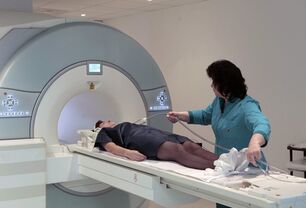
To find out why there is pain in the lower back, an initial visual examination is initially performed, followed by palpation. With its help you can determine the localization of the symptom. The patient describes the nature of the pain, the duration of the attacks, after which it may appear (falling, physical exertion). In addition, a number of studies are being carried out:
- Blood test. It can show inflammatory processes, the presence of infection, tumors.
- Urine analysis. Allows you to rule out kidney pathology. If the analysis is poor, an ultrasound is additionally prescribed.
- X-rays. Allows you to identify inflammatory processes, diseases of the spine, trauma, cracks, fractures, stretched nerve. Ideally, an x-ray of the spine and pelvis is done.
- CT. Tomography is more informative than X-ray, it can show small defects, a 3D image is created. In this case, all the bone structures are clearly visible.
- MRI. Allows you to explore the soft tissues inside or near the spine. At the same time, the condition of the spinal cord, nerve roots, yoga, muscles is checked. Hernias and vascular changes are clearly visible.
However, CT and MRI are shown only in severe symptoms. Usually, X-ray or ultrasound, laboratory tests of blood and urine are sufficient.
Basic therapy
If low back pain is caused by spinal problems, then complex treatment of pathology is used. It includes the following activities:
- Organizing a friendly spine regime;
- conducting manual therapy; use of
- therapeutic massage;
- Physiotherapy and reflexology sessions: acupuncture, UHF and others;
- Drug therapy: medications, ointment, blockade;
- Wearing a special corset, if necessary;
- Performing fitness exercises.
The main focus is on drug therapy, which is mainly aimed at eliminating the negative symptoms and removing the inflammation. As additional funds, physiotherapy, massage, exercise therapy are prescribed. In severe cases surgery may be required.
Medical treatment
Anti-inflammatory drugs are the first choice for back pain. They also relieve pain. Analgesics may be prescribed simultaneously. In addition, muscle relaxants are prescribed. Chondroprotectors are prescribed to reduce degenerative processes in cartilage. To relieve pain, blocking medications is sometimes done on the basis of pain medications.
Local ointments and gels are grouped into the following types:
- means nonsteroidal anti-inflammatory components.
- Combined drugs with anti-inflammatory effect and repair of tissue cells.
- Anesthetics and irritants.
- Homeopathic remedies.
- Chondroprotectors that help restore cartilage.
- Massage products (cosmetics).
It is important to know that these methods can relieve pain but can not cure the root cause. For example, damage to internal organs if lumbar pain appeared for this reason. In this case, you need to undergo an examination and a specialist will determine the effective treatment for this particular pathology.
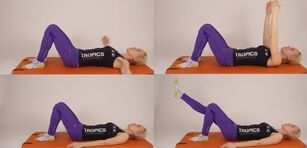
Exercise and massage
Exercise therapy (therapeutic gymnastics) and massage are recommended to strengthen the muscular part of the spine, to normalize blood circulation and increase tone. Exercise prevents back and lumbar pain. Exercise therapy complex is selected individually. Massage enhances the effectiveness of the exercises, restores the elasticity and flexibility of the ligaments. Combining it with a bath or sauna is allowed only on medical advice.
Physiotherapy
Physiotherapy methods are prescribed only after the relief of acute attacks of low back pain. The following procedures help reduce or prevent exacerbations. The following is used as physiotherapy:
- mud therapy;
- electrophoresis;
- balneotherapy;
- electrical stimulation of muscles;
- phonophoresis (ultrasound);
- paraffin treatment;
- Reflexology;
- Amplipulse therapy.
Procedures help reduce swelling, have an analgesic effect, improve blood circulation, relax muscles and normalize metabolic processes and lymph flow.
surgical
Absolute indication for surgery is cauda equina syndrome, when urinary and fecal incontinence occurs and bumps appear in the perineum. Also, intervention is necessary if medication is ineffective, low back pain lasts longer than six months and radiation to the legs begins. Surgical operations are also performed in the presence of a hernia.

Folk remedies
In addition, folk remedies can be used - infusions, decorations of medicinal plants. Compresses are made (for example, from chopped onion, fresh barberry leaves, boiled potatoes with cottage cheese, mustard). Used tincture of eucalyptus and barberry, warm honey, perfume, red pepper, iodine and valerian. For domestic use, vodka tincture or wheat garnish with coriander and milk is recommended.
Expert Recommendations
If the pain is felt for at least 3 months, it is considered severe pain. The following tips will help you cure acute low back pain and reduce its intensity:
- It is important for the patient to have absolute rest for 2-3 days. You should sleep and take a comfortable position: lie on your side and place a pillow between your knees, or press on your back and place the pillow under your knees. You can not be stationary all day - it is recommended to get out of bed every 2-3 hours and warm up for 10-15 minutes.
- If the pain is unbearable, you should take painkillers and anti-inflammatory drugs regularly. If you only increase their pain, you will not achieve the desired effect.
- Taking a warm shower every 3 hours or putting on a warm pillow for 10-15 minutes, or even cooling down, helps - it improves blood circulation, reduces pain and inflammation.
When you feel better, you should gradually return to your normal lifestyle. Prolonged bed rest contributes to muscle atrophy and this aggravates the disease. You can train your body by walking or walking on a simulator - this is a simple exercise for low back pain.
If low back pain is not an independent disease, it is the result of a serious disease that is in the body. Therefore, you should immediately contact a medical facility for pathology and competent treatment.































